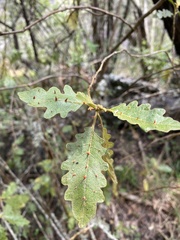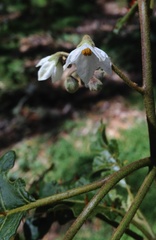Solanum incompletum: taxon details and analytics
- Domain
- Kingdom
- Plantae
- Phylum
- Tracheophyta
- Class
- Magnoliopsida
- Order
- Solanales
- Family
- Solanaceae
- Genus
- Solanum
- Species
- Solanum incompletum
- Scientific Name
- Solanum incompletum
Summary description from Wikipedia:
Solanum incompletum in languages:
- English
- thorny popolo
Images from inaturalist.org observations:
We recommend you sign up for this excellent, free service.
Parent Taxon
Sibling Taxa
- Solanum abortivum
- Solanum abutilifolium
- Solanum acanthodapis
- Solanum acanthodes
- Solanum accrescens
- Solanum acerifolium
- Solanum achorum
- Solanum actaeabotrys
- Solanum actephilum
- Solanum aculeastrum
- Solanum aculeatissimum
- Solanum acutilobum
- Solanum adenophorum
- Solanum adoense
- Solanum adspersum
- Solanum aethiopicum
- Solanum affine
- Solanum agrarium
- Solanum albidum
- Solanum aldabrense
- Solanum alternatopinnatum
- Solanum amblymerum
- Solanum ammophilum
- Solanum anfractum
- Solanum anguivi
- Solanum angustifolium
- Solanum aridum
- Solanum artense
- Solanum arundo
- Solanum ashbyae
- Solanum asteropilodes
- Solanum asymmetriphyllum
- Solanum atropurpureum
- Solanum aturense
- Solanum aureitomentosum
- Solanum austrocaledonicum
- Solanum bahamense
- Solanum barbisetum
- Solanum batoides
- Solanum beaugleholei
- Solanum borgmannii
- Solanum bumeliifolium
- Solanum burchellii
- Solanum campanulatum
- Solanum campechiense
- Solanum campylacanthum
- Solanum candidum
- Solanum capense
- Solanum capsicoides
- Solanum carduiforme
- Solanum caricaefolium
- Solanum carolinense
- Solanum cataphractum
- Solanum catombelense
- Solanum caumii
- Solanum chenopodinum
- Solanum chrysotrichum
- Solanum cinereum
- Solanum citrullifolium
- Solanum clarkiae
- Solanum cleistogamum
- Solanum coagulans
- Solanum comarapanum
- Solanum cordatum
- Solanum cowiei
- Solanum crinitipes
- Solanum crinitum
- Solanum croatii
- Solanum crotonifolium
- Solanum crotonoides
- Solanum cunninghamii
- Solanum cyaneopurpureum
- Solanum cymbalariifolium
- Solanum dasyphyllum
- Solanum dennekense
- Solanum dioicum
- Solanum diversiflorum
- Solanum dolichosepalum
- Solanum echinatum
- Solanum elaeagnifolium
- Solanum ensifolium
- Solanum erythracanthum
- Solanum falciforme
- Solanum felinum
- Solanum ferocissimum
- Solanum ferrugineum
- Solanum fervens
- Solanum forskalii
- Solanum furfuraceum
- Solanum giganteum
- Solanum glabratum
- Solanum glutinosum
- Solanum hastifolium
- Solanum heinianum
- Solanum heterodoxum
- Solanum hieronymi
- Solanum hindsianum
- Solanum hirtum
- Solanum houstonii
- Solanum humile
- Solanum hyporhodium
- Solanum inaequiradians
- Solanum inamoenum
- Solanum incanum
- Solanum incarceratum
- Solanum incompletum
- Solanum insanum
- Solanum insidiosum
- Solanum iodotrichum
- Solanum jamaicense
- Solanum kollastrum
- Solanum labyrinthinum
- Solanum lamprocarpum
- Solanum lanceolatum
- Solanum lanzae
- Solanum lasiocarpum
- Solanum leopoldense
- Solanum lianoides
- Solanum lidii
- Solanum linnaeanum
- Solanum litoraneum
- Solanum lycocarpum
- Solanum macrocarpon
- Solanum mahoriense
- Solanum mammosum
- Solanum marginatum
- Solanum melastomoides
- Solanum mellobarretoi
- Solanum melongena
- Solanum memaoyanum
- Solanum microphyllum
- Solanum milnei
- Solanum mitlense
- Solanum multiflorum
- Solanum multispinum
- Solanum myoxotrichum
- Solanum myriacanthum
- Solanum neei
- Solanum nelsonii
- Solanum nemophilum
- Solanum nigriviolaceum
- Solanum nummularium
- Solanum orthacanthum
- Solanum ossicruentum
- Solanum palinacanthum
- Solanum pancheri
- Solanum paniculatum
- Solanum pectinatum
- Solanum peekelii
- Solanum petraeum
- Solanum petrophilum
- Solanum platense
- Solanum pluviale
- Solanum polygamum
- Solanum prinophyllum
- Solanum pseudoauriculatum
- Solanum pseudolulo
- Solanum pseudopedunculatum
- Solanum pugiunculiferum
- Solanum pyracanthos
- Solanum quitoense
- Solanum ratale
- Solanum repandum
- Solanum richardii
- Solanum robustum
- Solanum rostratum
- Solanum rubetorum
- Solanum rubicaule
- Solanum sandwicense
- Solanum saponaceum
- Solanum saturatum
- Solanum scalarium
- Solanum schimperianum
- Solanum scuticum
- Solanum sejunctum
- Solanum semisucculentum
- Solanum sessiliflorum
- Solanum setaceum
- Solanum sisymbriifolium
- Solanum stelligerum
- Solanum stenandrum
- Solanum stipitatostellatum
- Solanum stramoniifolium
- Solanum supinum
- Solanum taitense
- Solanum tenuispinum
- Solanum tettense
- Solanum thomsonii
- Solanum toliaraea
- Solanum tomentosum
- Solanum torreanum
- Solanum torricellense
- Solanum torvoideum
- Solanum torvum
- Solanum tricuspidatum
- Solanum tudununggae
- Solanum ultimum
- Solanum urens
- Solanum usaramense
- Solanum vaccinioides
- Solanum vansittartense
- Solanum vanuatuense
- Solanum variabile
- Solanum velutinum
- Solanum vespertilio
- Solanum vestissimum
- Solanum viarum
- Solanum vicinum
- Solanum violaceum
- Solanum virginianum
- Solanum viridifolium
- Solanum volubile
- Solanum whalenii
- Solanum wightii
- Solanum wittei
- Solanum woodburyi
- Solanum wrightii
- Solanum yirrkalense
- Solanum zanzibarense
- Solanum zoeae





